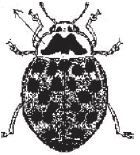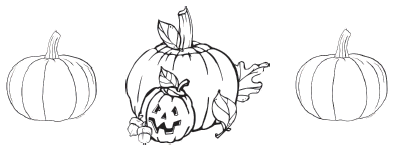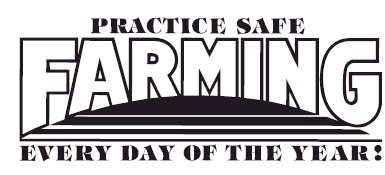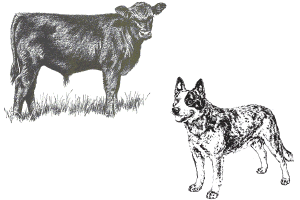

To send a message to an author, click on the author's name at the end of the article.
This Month in Ag Connection | Ag Connection - Other Issues Online
A common question at county extension offices is, "What is land going for?" In Missouri, land sales prices do not have to be reported to any governmental or public agency. Therefore, to get reliable information about land prices, many people turn to the University of Missouri Extension. One source of information is the Missouri Farm Land Values Survey.
The Missouri Farm Land Values Survey is conducted annually by MU Extension Economist Ron Plain. The survey respondents include lenders, rural appraisers, MU Extension Specialists, realtors, and others. Each year, respondents provide feedback to questions concerning current farmland values and trends. Responses exclude tracts smaller than 40 acres or land being converted to development or commercial use. Below is a summary of the July 2016 survey.
Average Value of Land
Respondents were asked to give estimates of land values for three classes of cropland and pasture (good, average, and poor), timberland (with valuable trees), and hunting/recreation land. The survey breaks Missouri into regions and reports averages for each region. The following are state averages:
Cropland Values per acre
Pastureland Values per acre
Timber and Hunting/Recreation Values per acre
This year's survey showed cropland values were up in 10 of the 20 areas of the state, but the statewide average was down by 1.3%. Good pasture land was down in 11 areas with a statewide average decrease of 3%. Timber land was down by $8/acre, but hunting/recreation land was up $24/acre.
Factors Affecting Values
Comments from respondents in all areas of the state indicated low cattle and grain prices were having a negative influence on farmland values. In some areas unfavorable weather in 2015 reduced crop yields resulting in less income for farmers. Reductions in USDA's CRP enrollment also negatively affected some farm incomes. In general, current economic factors and uncertainty about the future profitability of farm enterprises slowed the increase in land values this year.
Who is Buying Land?
The survey indicated 70% of farmland buyers planned to farm the land themselves. The number planning to rent the land remained steady at 20%, and the number planning to use for non-farm purposes decreased to 10%.
Outlook
For the next 12 months, respondents expect cropland values to fall 3.3%, pasture values to decrease about 2.3% and non-crop/non-pasture values to decrease 0.7%. To view the full survey, visit AgEBB - http://agebb.missouri.edu/mgt/landsurv
Source: Karisha Devlin, Ag Business Specialist
This Month in Ag Connection | Ag Connection - Other Issues Online
There are plenty of tasks to do in the lawn and garden in October. It is a good time to divide perennials, particularly those that bloom in the spring. To keep plants from drying out, dig the plants on a cool, cloudy day. Make sure each section divided has at least one bud and roots. Plant the divided perennials soon after digging. Not all perennials appreciate fall division, some prefer spring. Make sure the variety is suitable for fall division before dividing. A general rule of thumb is if they bloom in the spring, divide them in the fall. If they bloom in late summer or fall, division is best done in the spring.
Plant spring flowering bulbs before the ground freezes. Bulbs require a chilling period for spring blooming. Prepare the soil before planting bulbs. Work compost or other rich organic material into the soil to a depth of 12 inches. Follow the directions on the package for depth of planting. Not all bulbs are planted at the same depth.
Fall is a great time of the year for adding trees and shrubs to the landscape. The warm soil and cool air is ideal for root development. In some cases, trees and shrubs planted in the fall tend to establish themselves better than ones planted in the spring. This is because they have all of the fall and the following spring to get established before the most stressful time of the year, summer.
Fall is the best time to seed a lawn. Seeding should be completed by October 15. The first two weeks following seeding are critical. Keep the soil surface moist, not wet, and do not let seed dry out once it starts to germinate. Seed should be emerged and growing in 10 to 14 days.

Extend the vegetable harvest by using a floating row cover. Row covers can add a few extra degrees of protection against frost. A floating row cover is a translucent, spun polyester material that traps the soil's latent heat underneath it when it is spread over plants. Since sunlight can pass through, it can be left in place for several days during a cold snap. Row covers are relatively inexpensive and can be found at many local garden centers. They can also be reused for several years.
Dig sweet potatoes before a killing frost. Harvest pumpkins when they have developed a deep, uniform, orange color and the rind is hard. Pumpkins can remain in the garden through a light, vine-killing frost. All mature pumpkins should be harvested before temperatures drop into the mid to low 20's. Green, immature pumpkins will not turn orange after a killing frost.

October is also the time of year when Asian lady beetles will start looking for a nice warm location for the winter. As winter approaches adults seek out protection and cluster at these locations to hibernate. Beetles enter homes through window screens and doors, cracks in the walls, or vents. They will congregate in undisturbed areas of the home such as attics and spaces within walls until the temperatures become warmer and days longer in March and April. At this time the beetles then move outside to search for food and become the most active in the house. The use of a vacuum cleaner is the best method of collecting the beetles. They can also be swept up in a dustpan and relocated outside. If a vacuum is used, it is recommended the bag be changed soon afterwards, as the beetles will die and leave a permanent odor in the vacuum bag. It is important to try to prevent beetles from getting into homes by sealing outside cracks around doors, windows and siding. Window screens should fit snugly and not have any tears or holes and screening should be installed over attic and exhaust vents.
For more information on fall gardening tasks, contact your local MU Extension county office.
Source: Jennifer Schutter, Horticulture Specialist

This Month in Ag Connection | Ag Connection - Other Issues Online
Feeding livestock during the winter months is one of a producer's biggest expenses. Knowing the quality of the hay being fed can insure the livestock are getting the nutrition they need. When a hay quality test is not available, "average" values are assumed when balancing livestock rations. If hay quality is not as good as "average" then animal performance will suffer due to inadequate nutrition. If hay quality is better than "average" producers may be adding unnecessary expense to their livestock feed costs.
Hay quality is negatively influenced by the following conditions:
The best way to collect a hay sample is to use a hay probe, a hollow cylinder 12-18 inches long, which removes a core from the bale. Many University of Missouri Extension county offices have hay probes which can be borrowed for taking samples. Probe large round bales from the rounded side of the bale at waist height. Square bales should be sampled from the end to cut through multiple "slices or flakes" of hay. This method provides a representative sample because it will include hay from several places in the windrow. Collect cores from each lot of hay by randomly selecting 20 or more bales to be sampled. Thoroughly mix the cores together and fill a clean air tight "quartsize" plastic bag to maintain the moisture content.
Separate samples should be collected for each lot of hay or baleage. A lot is a group of bales similar in the following:
The goal is to remove the variability of the hay quality within the sample.

A list of laboratories analyzing hay samples can be found on MU's Agriculture Electronic Bulletin Board at www.agebb.missouri.edu. Click on the Hay Market Listing link and then the Certified Forage Testing Laboratories link.
After forage quality results are obtained and livestock nutritional requirements are known, forage can be allocated based on nutritional needs of the livestock. Contact an MU Extension livestock specialist for assistance balancing rations.
Source: Valerie Tate, Agronomy Specialist
This Month in Ag Connection | Ag Connection - Other Issues Online
The Missouri Livestock Symposium is a premier educational event for livestock producers nationwide. If you are serious about livestock production, then plan to attend a hear from nationally-known speakers covering timely topics.
There is a free event and no pre-registration is required. Just show up and enjoy the educational pro-grams, trade show and free meals.

Website: http://www.missourilivestock.com
Publishing Information
Ag Connection is published monthly for Northeast and Central areas of Missouri producers and is supported by the University of Missouri Extension, the Missouri Agricultural Experiment Station, and the MU College of Agriculture, Food and Natural Resources. Managing Editor: Mary Sobba.